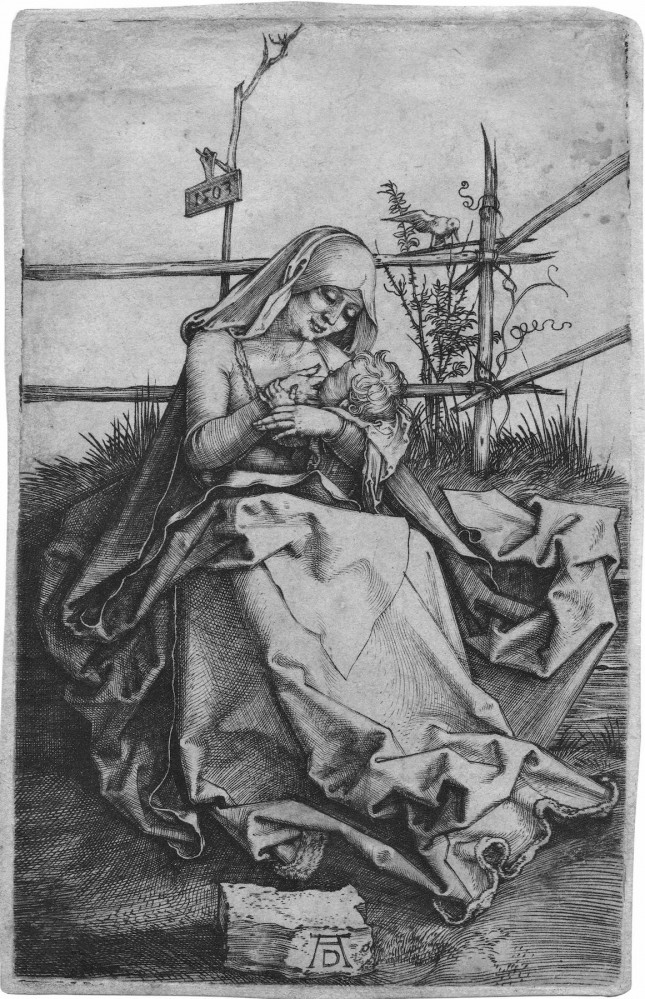Original engraving, monogrammed and dated on plate; Meder 31 a/e;
Superb proof impressed in the first variant, coeval, prior to the appearance of the scratches on the robe at the Madonna's knees. Specimen with particularly intense inking, so much so as to giving an effective velvety effect. Complete and with an irregular 1 to 2 mm margin thread all around. In perfect state of preservation, with the exception of a small stain in the upper right corner of the white area of the sky.
Albrecht Dürer's care, humanity and skill in sketching the Virgins is well known, just as he is credited with revolutionizing Christian iconography toward a more earthly and therefore comprehensible approach to believers, which takes the form of conferring, particularly on his Madonnas, maternal features and spirit. An evolution encouraged by two cultural aspects inherent to him. On the one hand, his convictions toward the Lutheran Reformation that lead him to a greater concreteness in dealing with religious iconography. On the other, his deep knowledge of anatomy, the elements and phenomena of nature that favored him in the construction of his subjects. His extraordinary manual dexterity, then, allows him to masterfully realize the reflections he matured.
The engraving, carved in the period –between 1500 and 1505– which also saw the creation of famous and immortal watercolors such as the Hare, the Bullfrog, and the Parrot, shows a further evolution in the painstaking care and meticulous observation of nature and its elements, always present in Dürer's works. These are also the years in which he perfected his mastery of the graphic medium reaching levels still unsurpassed today.
In Virgin and Child on a grassy bench, Dürer's interest is all focused on the loving and absolute gaze typical of a mother nursing her child. But he does not forget to surround them with details of sublime beauty, such as the little bird perched behind her, the woody curls of the knots in the fence, the blades of grass silhouetted against the line of the proda, and the plaque that proudly indicates the date of execution. And again of the many folds of the robe that wraps them in a perfect geometric fit.

